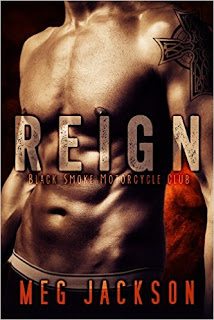Man Titty: Yes or No?

Romance writers have been discussing a new topic recently: male objectification. You’ve seen those romance covers featuring shirtless men with incredible muscles and maybe some serious tattoos, too. Other covers have headless male torsos with ripped muscles. They’re very popular, as any list of top-selling books will attest. But are they sexist? Are they just as obnoxious and detrimental to the societal position of men as nude girlie calendars are to women? Does a “hunky firefighter calendar” style pose objectify and degrade men? And should romance novel covers objectify men?
Of course as women we are so used to being objectified for the pleasure of the male gaze that for some of us this new trend is just a version of “good for the goose, good for the gander.” In other words, if books already show headless women (and they do), why not show headless men? If books show very idealized female bodies (yes, of course they do), why not idealized male bodies?
What’s wrong with this situation? Depends on your point of view. As a reader, if you like those covers, or if you actively LOVE those covers, of course you’re going to want them to continue to be published. I remember seeing some very sexy covers on romances and thinking a lot about the scenes portrayed. Those covers were not revealing of bodies particularly, but something about them made me sigh. As an author, if you find that more people buy your books if your covers feature “man titty”—naked male chests with amazing musculature—of course you’re going to want to keep publishing your books with those kinds of covers.

But what if as a reader you find covers with naked male chests offensive, or even just too much? Too sexy? Too realistic about male bodies (even idealized bodies) and not romantic enough? Or too unrealistic, because, just like those supposedly “typical” beautiful women on book covers, the “typical” handsome men on book covers are far from typical? Male models say they work very hard to obtain and maintain that super cut look. Most men don’t have the motivation or the time to make their bodies look so heavily muscled. Even the trend for Hollywood actors to buff up is fairly recent.
What if in your ideal romantic scenario, a romantic hero’s face is important, not his body? Or what if, like me, you grew up in a fairly conservative milieu and the men in your family didn’t generally strip to the waist in public? Even if the weather was intolerably hot, none of my male relatives have ever taken their shirts off and wandered around half-naked—whether inside the house or outside it. None of that mowing the lawn just wearing a pair of running shorts that other men do. Which of course makes the sight of a naked male chest that much more intimate, because it is only to be seen in the bedroom. Different strokes.

Because this debate has been taking place on romance writing email information loops, the statements made are private and I can’t link to them. What is fascinating to me as a longtime reader of romance is how much serious thought romance writers give to the topic. The consensus seems to be that since the position of men in our society remains dominant (where are our female presidents, CEOs, governors, and the rest?), showing some male skin on a book cover is unlikely to threaten men as a whole. Showing such ripped bodies clearly does threaten some individual men, who—surprise!—just like us women, find it difficult to live up to the unrealistic standards of beauty such covers convey. These covers may even provide a good educational opportunity for men to finally understand just how threatening to self-esteem pervasive objectification can be.
